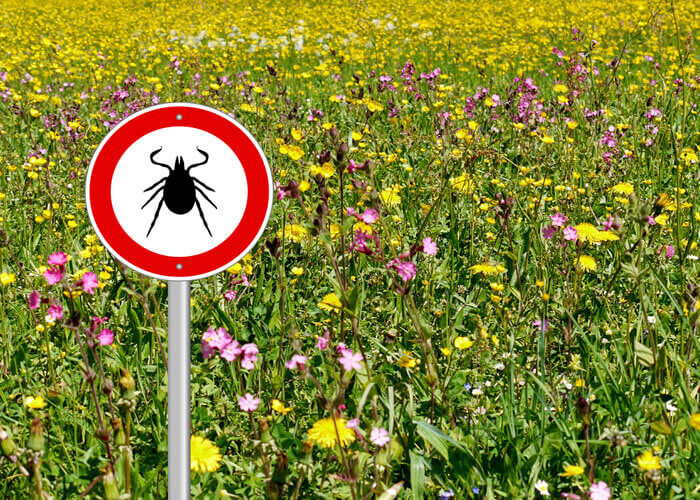With climate change and warmer weather throughout the nation comes a rise in blacklegged ticks – the kind of tick that can spread Lyme disease.
According to the Centers for Disease Control and Prevention (CDC), around 30,000 cases of Lyme disease are reported each year, but this number does not reflect every case; studies suggest that as many as 300,000 Americans are infected annually.
Blacklegged ticks attack during spring and summer months, and most pick up the disease through young, tiny ticks (2mm or smaller), although adults can carry the disease too. Contrary to popular belief, Lyme-carrying ticks aren’t only found in trees, but can also live in tall grass or any densely wooded area.
Lyme disease is the most common tick-borne illness in the U.S. with most infections occurring in the following areas: the west coast (especially northern California), northeast and mid-Atlantic regions (from Virginia to Maine) and north central states (mostly Wisconsin and Minnesota).
The best way to stay away from Lyme disease is through prevention and quick tick removal. In most cases, the tick must be attached for 36 – 48 hours or more before the disease is transmitted. However, if you seek treatment soon enough, usually within about a few weeks, you’re likely to recover with a simple dose of oral antibiotics, according to the CDC.
The incubation period of a tick bite varies. After a person becomes infected by a bite, they usually don’t notice symptoms until after one to two weeks – but symptoms can show up as quickly as a few days, or take as long as a year. Lyme disease can be hard to detect since many of its symptoms, such as painful joints and muscles, are also common in other illnesses.
Watch for the following indications of Lyme disease, listed in the order they tend to appear. If you or a loved one experiences any of the following symptoms, it’s advised to seek immediate medical attention, which may include testing for the disease.
Rash – Located at the site of the bite, a”bull’s-eye” rash occurs 70-80% of the time and usually appears within seven days, but can show up between three to 30 days of being infected. The rash is rarely itchy or painful and may become clear as it gradually expands in diameter, which can reach up to 12 inches. Other lesions may also appear on different areas of the body.
Flu-like Symptoms – According to the CDC, within one to two weeks of being bit, some people get symptoms similar to those of a cold or flu including a headache, fever, muscle and joint aches, severe neck stiffness, and/or swollen lymph nodes. These symptoms do not always accompany the bulls-eye rash and could be the only evidence of infection.
Neurological Symptoms – Also called “Bell’s Palsy”, facial palsy can set in days to weeks post-tick bite and is characterized by a loss of muscle tone on one or both sides of the face. You may also feel severe exhaustion, like you would if you had the flu. Other neurological symptoms include migraines, numbness and tingling in the hands and feet, and shooting pains down the legs. Inflammation of the spinal cord, known as meningitis, is also a symptom, according to CDC.
Arthritis – After several weeks to a month of going untreated, approximately 60% of those infected with Lyme develop swollen, painful joints – with the knees being the most common but the hands rarely affected. The pain can come and go in duration and location of body, and last for a few days to a few months.
Heart Problems – Fewer than 10% of those infected with Lyme disease develop heat problems which can include an irregular, slow heartbeat. One way to know if you’re having heart problems is if you’re dizzy or short of breath. These symptoms rarely last more than a few days and can go away even before treatment.
Approximately 10 – 20% of patients with Lyme disease have Post-treatment Lyme disease syndrome (PTLDS) with symptoms that last months to years after being treated with antibiotics including muscle and joint pain, problems with cognition and sleep, and fatigue. To learn more about PTLDS, including the latest treatment and research, visit the CDC website.
Sources
U.S. Center For Disease Control
Environmental Health Perspective
